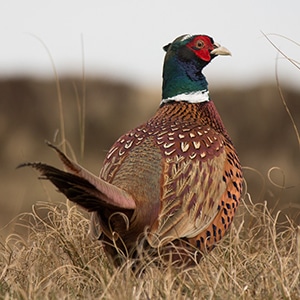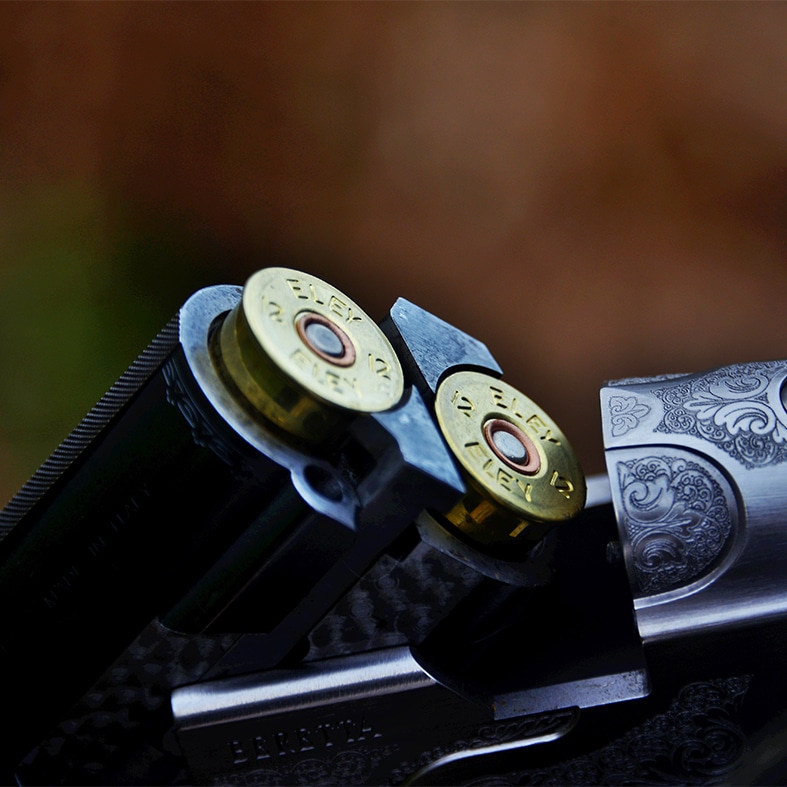Ammunition
Read all of our latest advice and guidance on ammunition, whatever your chosen shooting discipline.
The move away from lead ammunition
The publication of the UK REACH lead restriction dossier for lead ammunition on 6 May 2022 by the Health and Safety Executive (HSE), would see a ban on the sale and use of many forms of lead ammunition outdoors in England, Scotland and Wales.
Limited exemptions have been outlined in the dossier for the continued use of lead ammunition in some licensed settings.
The wide-ranging proposed restrictions, which closely reflect EU REACH proposals, would apply to shotgun, rifle and airgun ammunition. The dossier is now undergoing a high level of scrutiny and we will be playing a full role in that process.
A six-month consultation followed the publication and closed in November. The HSE and Environment Agency (EA) will review the consultation responses prior to preparing a final restriction report.
This report, expected to be published in 2023, will be a set of recommendations to Defra. This will provide the basis for legislation.
We expect the Socio Economic Impact Assessment consultation to be launched by the HSE, in late July, in line with the final restriction dossier. This will be a 60 day consultation and BASC will submit a comprehensive response in line with the impacts.
To date we have undertaken 166 events where we engage with people and let them try sustainable ammunition, find an event in your area here.
Sustainable shotgun ammunition
Sustainable rifle ammunition
Sustainable airgun ammunition
The transition to sustainable ammunition
Latest news
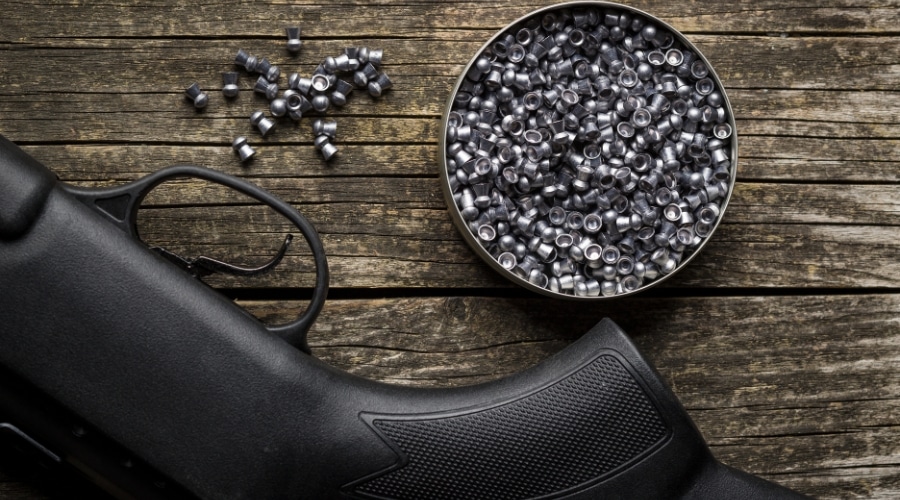
New HSE consultation launched on lead ammunition
A HSE consultation on the outdoor use of lead ammunition in England, Scotland and Wales revises previous proposals, removing restrictions on the use of lead airgun pellets.
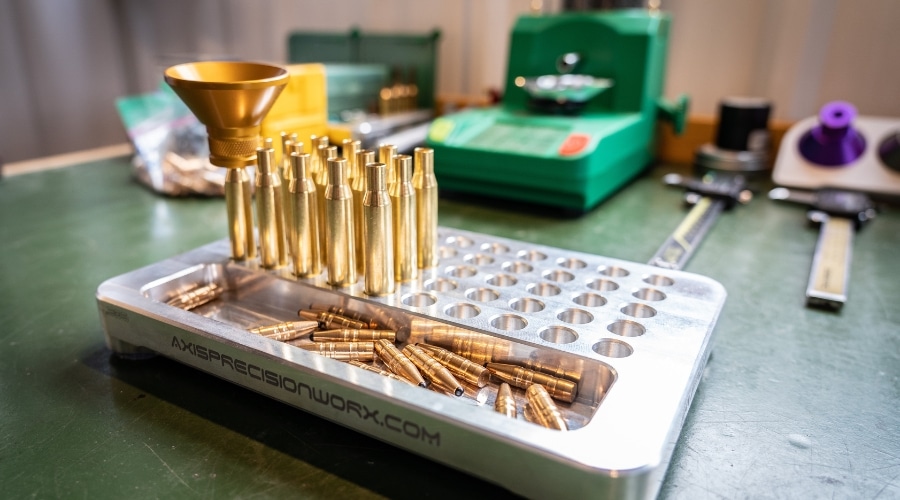
What you need to know about the Firearms Act 2023
The Firearms Act 2023, which was passed to become law in September 2023, aims to combat the illegal manufacture of Section 1 ammunition.
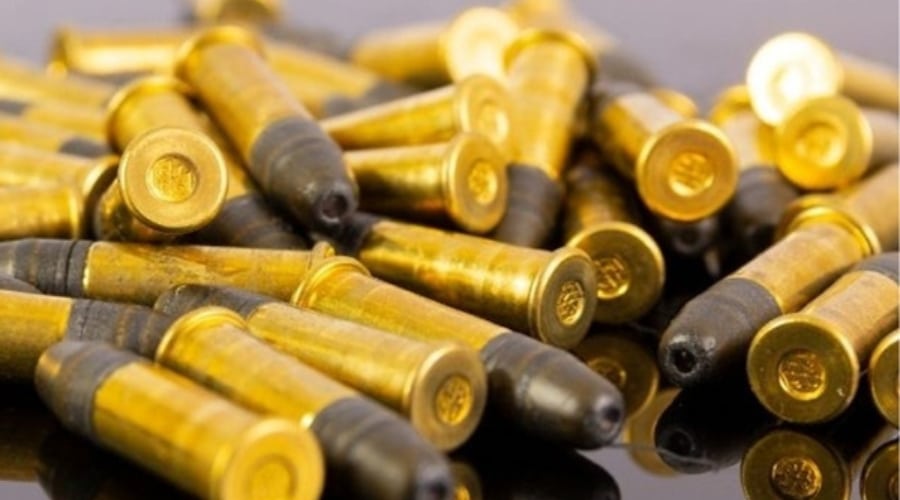
BASC responds to HSE lead ammunition restriction extension
The Health and Safety Executive has extended its lead ammunition restriction process by six months to assess all 2,759 consultation responses.
UK REACH lead restriction proposals - what you need to know
UK Registration, Evaluation Authorisation and Restriction of Chemicals (UK REACH) is part of the UK’s independent chemicals regulatory framework but is essentially a copy of the European approach (EU REACH). UK REACH regulates the use of chemicals to protect human health and the environment and is led by the Health & Safety Executive (HSE). It will work with ministers of the devolved governments and devolved statutory environmental agencies to make regulatory decisions about substances and/or articles.
Although called UK REACH, the framework applies to England, Wales and Scotland (i.e. Great Britain) but not Northern Ireland. Due to the Northern Ireland Protocol, Northern Ireland remains under the EU REACH framework.
On 29 April 2021, the Health and Safety Executive (HSE), as the agency for UK REACH, received a request under Article 69(1) of UK REACH from the Secretary of State for Environment, Food & Rural Affairs, with the agreement of the Scottish Government and the Welsh Government, to prepare an Annex 15 restriction dossier assessing the risks from lead ammunition on the basis “that the use of lead in ammunition raises concerns related to both human health and the environment. The harm of lead ammunition to wildfowl is of particular concern – poisoning from ingesting lead ammunition causes long-term suffering and slow painful deaths for animals. The health of humans, particularly children, may also be adversely affected from eating meat killed using lead ammunition.”
Starting the process of regulating lead ammunition is one of five key objectives for UK REACH in 2021/22, with a target to produce an Annex XV restriction dossier no later than 29 April 2022.
A restriction dossier is a document prepared by the regulator that provides proposals for restrictions on a substance, chemical or article. The dossier must contain information on hazards and risks associated with that chemical, substance or article, available information on alternatives (substances and/or processes) and a justification for restrictions proposed.
The dossier needs to show that restriction is the most appropriate risk management instrument for addressing the identified risks. The restriction dossier may also include an analysis of the socio-economic impacts of the proposed restrictions.
No. The proposals in the restriction dossier are just that, proposals. They will be subject to scientific scrutiny by independent experts, agency consultation and full public consultation before a final restriction report is prepared.
The restriction report is the document from which legislation will be drafted. No restrictions will come into force until the end of the legislative process and the enactment of a new law.
We are carefully analysing the restrictions proposed in the dossier alongside the supporting evidence. There are over 450 pages of information, and it will take time for BASC and the other shooting organisations to prepare their response to the regulator.
Our response will come through public consultation and accredited stakeholder engagement. This will allow us to comment during the ‘scientific scrutiny’ and ‘challenge panel’ elements of the process.
Shotgun ammunition:
Ban on the sale and use of lead shotgun ammunition.
- 18-month transition period.
- Optional derogation (exemption), allowing sale and use for clay pigeon shooting by licensed athletes at licensed shooting grounds. A shooting ground licence would require annual recovery of 90%+ of spent lead shot, containment and treatment of run-off, and a ban on agricultural activity within the site boundary.
- Note: If the optional derogation is taken forward, the transition period for all uses of lead shot would be extended to five years.
Lead bullets (including centrefire, rimfire, airgun and any other projectiles containing lead):
Ban on use of all lead bullets (centrefire, rimfire, airgun pellets and other projectiles containing lead)
- An 18-month transition period for large calibre (5.6mm or larger) or 5 years for small calibre (smaller than 5.6mm) including rimfires and airguns and any lead projectiles not defined as gunshot
- Optional derogation allowing continued use of lead bullets at licensed ranges with appropriate environmental protection measures. A licence would require regular recovery of >90% of lead from bullet traps, and a ban on agricultural activity within the site boundary.
Sector of Use | Use# | Type of use | Main risks identified | Estimated release to the environment (tonnes per year) |
Hunting | 1 | Hunting with shotgun cartridges | Primary and secondary poisoning of wildlife (birds) | 6,537 |
2a | Hunting with bullets – small calibre, including airguns | Secondary poisoning of wildlife (birds) | 14.5 | |
2b | Hunting with bullets – large calibre | Secondary poisoning of wildlife (birds) |
| |
Sports shooting | 3 | Outdoor target shooting with shotgun cartridges | Primary and secondary poisoning of wildlife (birds) | 1,680 |
4 | Outdoor target shooting with bullets | Ingestion of contaminated soil or vegetation by livestock (ruminants) on shooting ranges/areas used as agricultural land | 26.8 | |
5 | Outdoor target with air rifle/pistol | No data | ||
Shooting with historical weapons | 6 | Other outdoor shooting activities including muzzleloaders, historical re-enactment, etc. | No data |
BASC will continue to pursue its voluntary transition away from lead shot and single-use plastics for live quarry shooting with shotguns.
The transition has been successful in starting change in the sector. We are supporting the community in making the transition to lead-free alternatives with advice, education, and opportunities to try new sustainable shotgun ammunition products.
Given the severity of the proposals from UK REACH, the voluntary transition has given the sector a head start on any future legal requirements to use non-lead ammunition.
The regulator does not consider that voluntary or self-regulated transitions to lead-free ammunition will generate sufficient and broad enough change across the sector to eliminate the identified risks.
The regulator refers to the low compliance with existing environmental protection regulations on several occasions. They cite the high percentage of ducks continuing to be shot with lead as evidence to support the proposals for strict regulation that limits opportunities for non-compliance.
The HSE have indicated in the restriction dossier that legislation could come into effect in 2024.
The voluntary transition is only concerned with moving to lead-free alternatives for live quarry shooting with shotguns. At the time of the launch of the voluntary transition, UK REACH did not exist.
BASC has been fighting lead ammunition bans since they were first proposed in a 1983 Royal Commission on Environmental Pollution report.
The European Chemicals Agency has been reviewing the use of lead ammunition since 2011 and BASC has been supporting the European Federation of Hunting Associations (FACE) in fighting these proposals.
In 2016, after a lengthy campaign by BASC and other shooting organisations , the UK government rejected proposals for a lead ban, , with the Secretary of State noting that the findings of the Lead Ammunition Group did not show the impacts of lead ammunition were significant enough to justify changing government policy.
In 2021, proposals to ban lead ammunition in the European Union were published along similar lines to what has recently been proposed by the UK Health and Safety Executive for England, Wales and Scotland.
The restriction dossier proposes transition periods between 18 months and five years. Any transition periods would only start from the date any new law is passed.
The restriction dossier is prepared on the assumption that legislation will come into effect in 2024, although there is no indication of which month.
No. BASC is fighting to ensure that any future legal restrictions on lead ammunition are proportionate to the risk and necessary. Where restrictions are necessary, we will seek realistic transition periods that allow for the development of the full suite of required products – and at the necessary scale – to meet market demand.
It is also noted that the proposals include exemptions that would allow continued use of lead in some settings, such as clay ground and target ranges, where the necessary environmental protection measures are in place.
Lead is toxic and classified as a ‘substance of very high concern’. Its impacts on wildlife, the environment and human health are well documented. Taking a proportionate approach to the elimination of risk posed by lead ammunition would improve the sustainability of shooting in the future.
Based on the proposals, there would be at least 18 months in which to use up shotgun and large calibre rifle lead ammunition even after any law is passed. There would be five years in which to use up small calibre rifle bullets, airgun pellets and other lead projectiles not defined as lead shot after any law is passed.
The proposals also mention a buy-back scheme for lead ammunition, but there are no details of how this would operate at this time. The HSE suggests that such a scheme will be considered during the consultation process.
Yes. All lead ammunition including lead shot, lead bullets and other lead projectiles not defined as shot would be affected.
There are proposed derogations for the continued use of lead shot, lead bullets and other lead projectiles not defined as gunshot in target shooting. These derogations would be under a licensing system which licenses venues where appropriate environmental protection measures are in place.
The CIP (Permanent Proof Commission) is an international body which lays down standards to which the British Proof Authority must adhere when proofing guns in the UK.
Standard steel shot cartridges are safe for use in any post 1954 nitro proofed gun. As proof testing is mainly predicated on chamber pressure, it follows that pellet composition material is not relevant to the proof test. Consequently, any post 1954 nitro proofed gun is highly unlikely to become “out of proof” if lead shot were to be banned or otherwise restricted. NB Standard Steel cartridges may not contain pellets larger than 3.25mm diameter.
As the CIP is silent on the matter of choke constriction for Standard Steel cartridges, it follows that they may b fired through any degree of choke.
In the case of High-Performance steel shot cartridges, the CIP issues guidance on choke which varies according to the gun’s bore size.
In the transitional period before any ban on the use of lead shot in Great Britain is imposed, the British Proof Authority may revise its proof test procedure, taking into account any input from the CIP.
